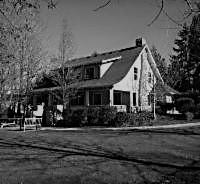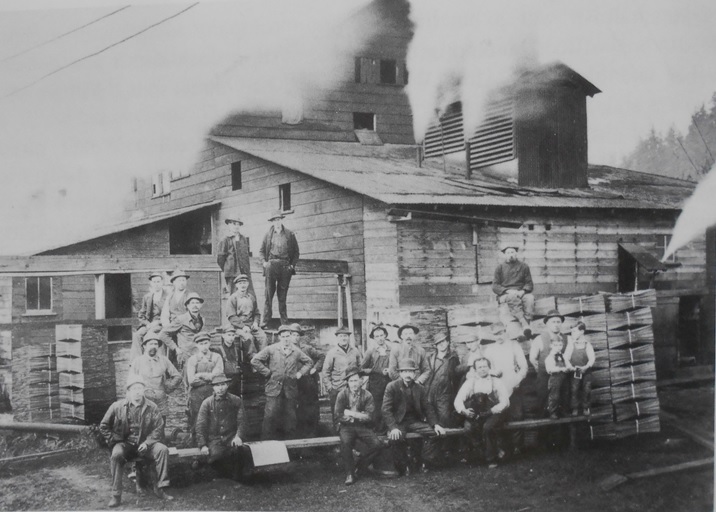Strange as it may sound, there once was a seal who lived 25 years in Lake Sammamish. Lovingly referred to as “Butch”, the 250 pound harbor seal was first spotted in 1950. At first, locals thought he might be a muskrat or an otter, but his size quickly ruled out those options. Harbor seals, unlike other pinnipeds, are known to live in in low-salinity waters, like rivers and estuaries. But how did Butch get to Lake Sammamish in the first place?
It is possible that Butch made his way from Puget Sound, through the Hiram M. Chittenden Locks to Lake Union and then Lake Washington, and finally up the Sammamish Slough. There have been other seal sightings in Lake Union and the north end of Lake Washington. There is just one flaw in this explanation; Butch was wearing a collar. It may be more likely that Butch was a pet someone released in the lake once they tired of him.
Butch the seal being lured ashore by Shannon, the golden retriever, in order to capture him for medical treatment (2003.022.006b)
In 1961, Jack Jarvis of the Post-Intelligencer reported that Butch was outgrowing his collar. It was cutting into his neck and blood was found on the dock where he usually slept. Some members of the community worried that this wound would make the seal more aggressive, while others maintained that he was a friendly (albeit mischievous) creature.
There was a brief effort to establish a Save Butch Fund”, designed to facilitate capturing and rehoming Butch at Woodland Park Zoo. This plan was ultimately abandoned due to unknown cost for such an undertaking and the risks associated with tranquilizing the seal.
Butch being netted and taken for medical treatment in 1975 (2003.022.005b)
Over the years, Butch became a known and mostly accepted part of life on Lake Sammamish. He would occasionally bump up against swimmers or wave a flippers at folks on the docks. He established a sort of friendship with several lakeside dogs, although the dogs may not have found his style of “play” very fun. He would sometimes pull a dog a short ways under the water before releasing them to swim back to the surface.
In September of 1975, Butch nearly drowned a dog named Shannon when he dragged her from a dock and into the water. This incident, and a few others, indicated that the seal was becoming a threat to the community. The collar around his neck was still a concern and he likely needed medical treatment as well. Department officials lured Butch from the water with Shannon, netted and sedated him for transport. The aim was to release him into Puget Sound when he had recovered.
Butch the seal netted for medical treatment by the Washington State Dept. of Game in 1975 (2003.022.004b)
Unfortunately, he never made it to Puget Sound. Butch died September 12, 1975, from complications of old age. The collar wound was the most severe problem, which had constricted his breathing. Butch’s skeletal remains were given to the Museum of Natural History at the University of Puget Sound where they were to be used for long-range mammal comparison research.
Resources
Campbell, N. P. (n.d.). Butch the lake sammamish seal . Butch the Lake Sammamish Seal by Nan P. Campbell. Retrieved September 20, 2022, from https://www.historylink.org/File/5542
Do harbour seals (phoca vitulina) housed in fresh water need to be supplemented with salt? VIN. (n.d.). Retrieved September 20, 2022, from https://www.vin.com/apputil/content/defaultadv1.aspx?id=3864854&pid=11257&print=1
Harbor Seal facts. SeaDoc Society. (n.d.). Retrieved September 20, 2022, from https://www.seadocsociety.org/harbor-seal-facts
Team, C. (2018, November 23). Butch the Harbor Seal Lives 25 years in Lake Sammamish. Friends of Lake Sammamish State Park Website. Retrieved September 20, 2022, from https://www.lakesammamishfriends.org/blog/2018/11/21/harbor-seal-lives-25-years-in-lake-sammamish
Eastside Heritage Center Archives















